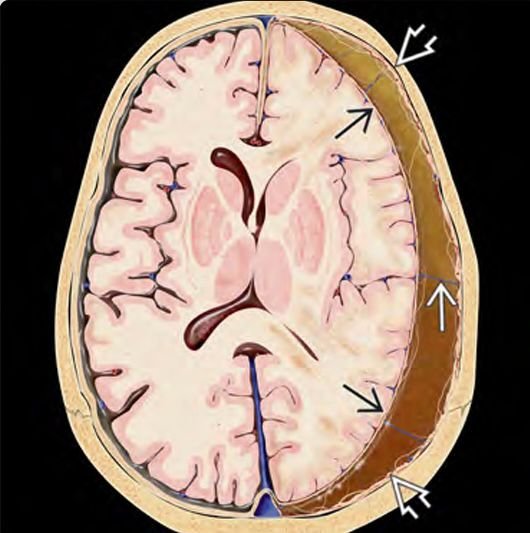Penetrating Brain Injuries
Penetrating Brain Injuries
Penetrating brain injuries (PBI) in children are severe and life-threatening neurosurgical emergencies caused when an object breaches the skull and dura mater, entering the brain tissue. These injuries often result from road traffic accidents, falls onto sharp objects, violence, or industrial accidents, posing significant challenges in pediatric neurosurgical care. In Bangladesh, where urbanization and industrial activities are rapidly increasing, pediatric PBIs require urgent, specialized treatment to minimize mortality, prevent complications, and improve neurological outcomes. Early expert intervention by experienced pediatric neurosurgeons like Dr. Md. Nafaur Rahman is crucial for successful management. What Are Pediatric Penetrating Brain Injuries? PBIs involve direct mechanical injury to brain tissue caused by foreign objects such as nails, knives, glass fragments, or metal rods penetrating the skull. Unlike blunt trauma, PBIs cause focal brain damage, increased risk of infections, hemorrhage, and raised intracranial pressure, often demanding complex surgical interventions. Causes of Pediatric Penetrating Brain Injuries in Bangladesh Road Traffic Accidents: Children involved in motor vehicle collisions or as pedestrians sustaining impalement injuries Falls: Particularly from construction sites, rooftops, or onto sharp objects Violence: Incidents involving knives, sticks, or sharp weapons Industrial and Domestic Accidents: Mishaps involving machinery, tools, or household items Self-inflicted or Accidental Injuries: In rare cases, due to children’s curiosity or accidental falls Clinical Presentation and Symptoms Presentation depends on the injury site and severity but commonly includes: Visible penetrating wound or foreign object protruding from the skull Loss of consciousness or altered mental status Severe headache and vomiting Seizures or convulsions Focal neurological deficits such as weakness, paralysis, or sensory loss Cerebrospinal fluid (CSF) leakage from nose or ears (rhinorrhea or otorrhea) indicating skull base fractures Signs of increased intracranial pressure (ICP) such as irritability, bulging fontanelle in infants, and pupillary changes Diagnostic Evaluation Prompt and precise diagnosis is vital and includes: Non-contrast CT Scan: The primary imaging modality for detecting the foreign body, brain injury extent, hemorrhage, and fractures CT Angiography: To evaluate vascular injury in proximity to major vessels MRI Brain: Useful in subacute stages or when assessing soft tissue damage, but contraindicated in presence of metallic foreign bodies Neurological Assessment: Pediatric Glasgow Coma Scale (GCS), cranial nerve evaluation, and motor-sensory examination Laboratory Tests: To assess coagulation status and screen for infections Treatment Approach by Dr. Md. Nafaur Rahman Emergency Care and Stabilization Immediate airway, breathing, and circulation (ABC) management Intravenous fluids and medications to control intracranial pressure Prophylactic antibiotics to prevent infections such as meningitis and brain abscess Anti-seizure medications to prevent post-traumatic epilepsy Surgical Management Careful removal of foreign bodies when indicated, avoiding further brain damage Debridement of necrotic brain tissue and repair of dural defects to prevent CSF leaks Hematoma evacuation and control of active bleeding Skull fracture repair and cranioplasty as needed Management of secondary brain injury complications such as edema or hydrocephalus Prognosis and Rehabilitation The outcome varies depending on injury severity, location, and timeliness of treatment. Early surgical intervention by skilled pediatric neurosurgeons like Dr. Nafaur Rahman improves survival rates and functional recovery. Long-term follow-up focuses on: Neurological rehabilitation including physiotherapy, occupational therapy, and speech therapy Monitoring for complications such as infection, hydrocephalus, or seizures Supportive care addressing cognitive and behavioral changes Family education and psychological support Pediatric Neurosurgical Excellence in Bangladesh Dr. Md. Nafaur Rahman provides world-class pediatric neurosurgical care for penetrating brain injuries at the National Institute of Neurosciences & Hospital (NINS) and Bangladesh Paediatric Neurocare Centre. His expertise ensures: Multidisciplinary approach involving neurosurgery, critical care, and rehabilitation Use of advanced imaging and microsurgical techniques Tailored treatment plans specific to the pediatric population Emphasis on minimizing neurological damage and promoting full recovery Contact Information for Pediatric Neurosurgery 📌 Dr. Md. Nafaur Rahman Assistant Professor, Department of Pediatric Neurosurgery, NINS Chief Consultant, Bangladesh Paediatric Neurocare Centre 📞 Appointment & Emergency Contact: 📱 +8801912988182 | +8801607033535 🌐 www.neurosurgeonnafaur.com
YouTube Videos and Patient Reviews on Penetrating Brain Injuries










